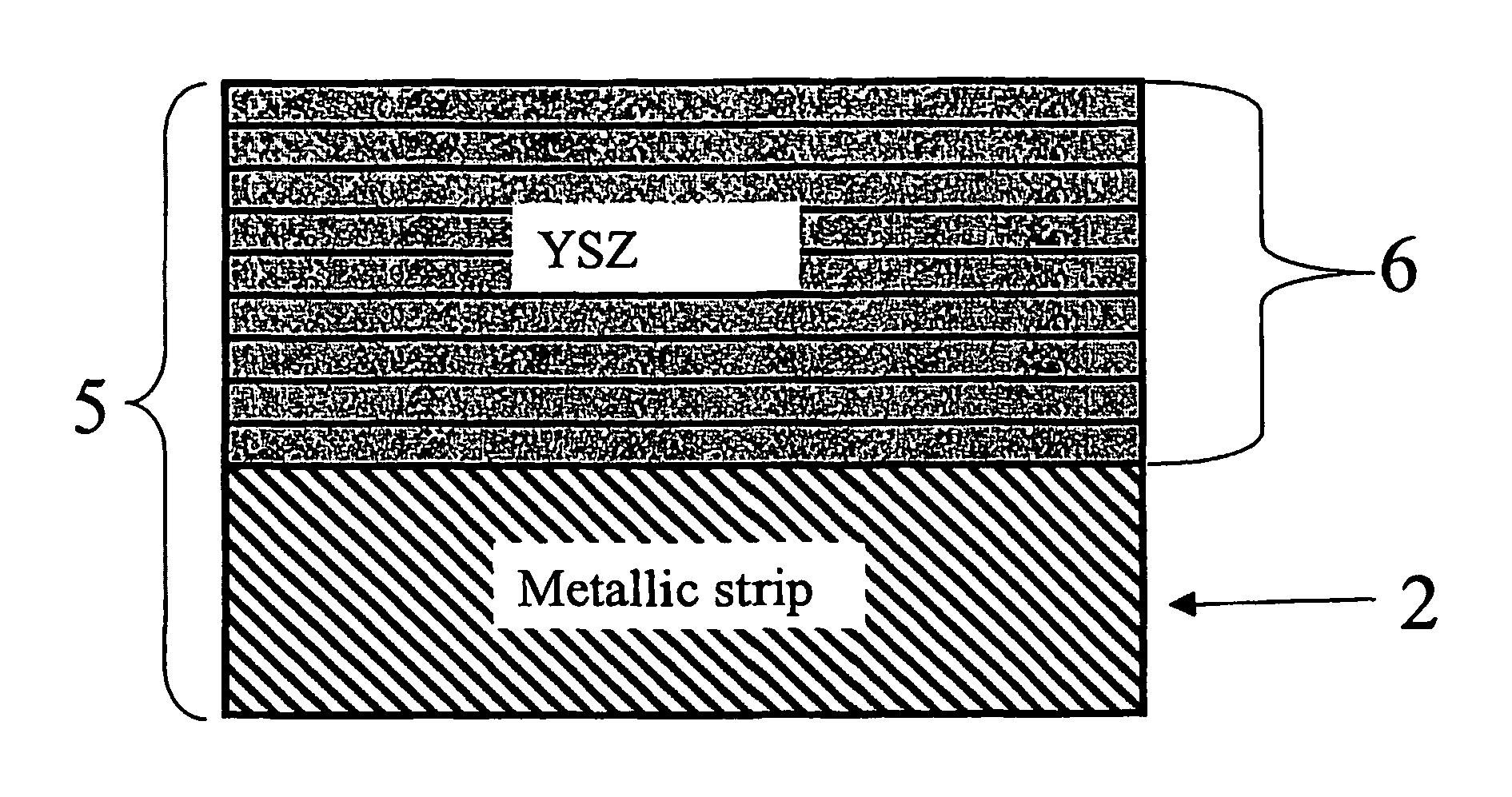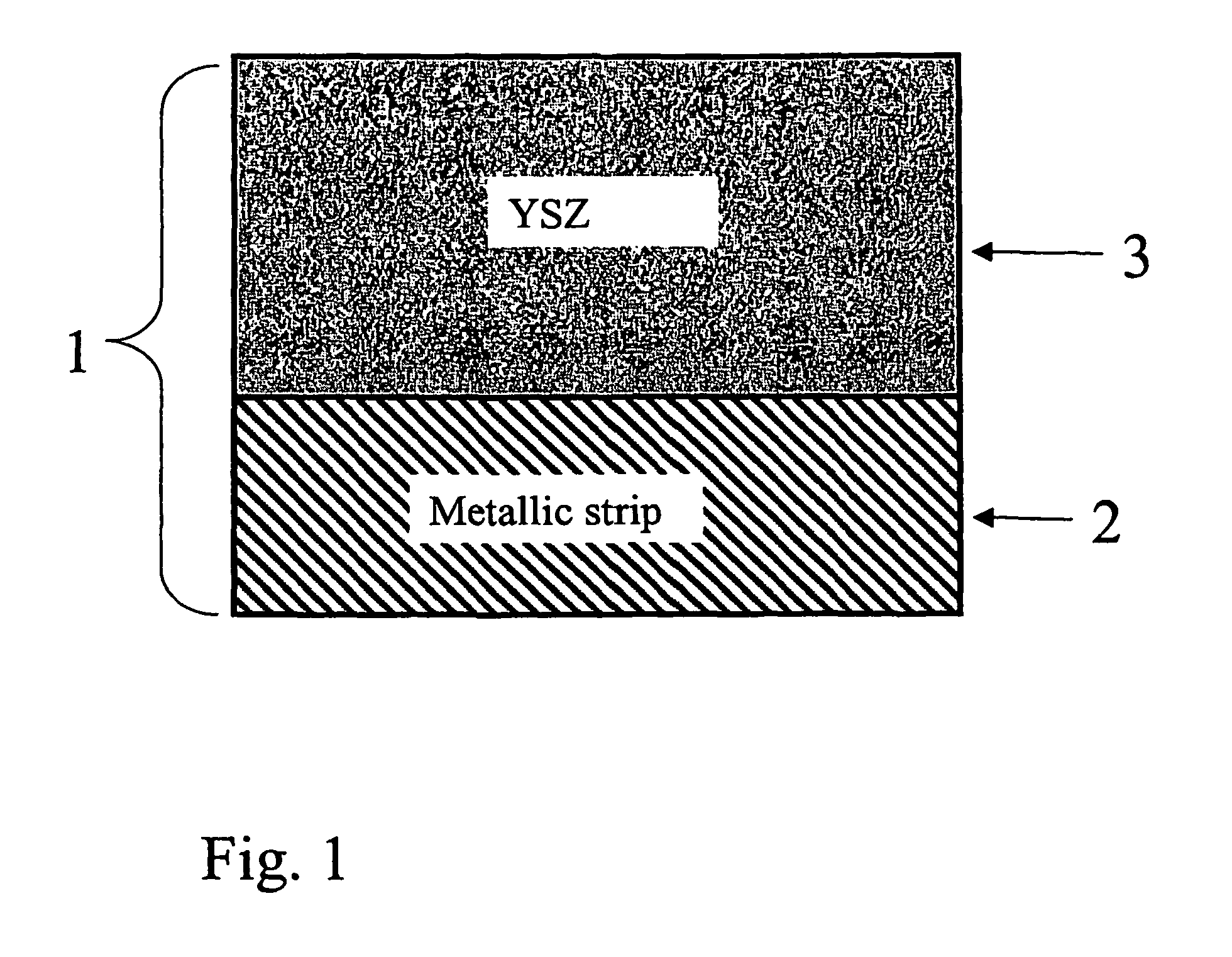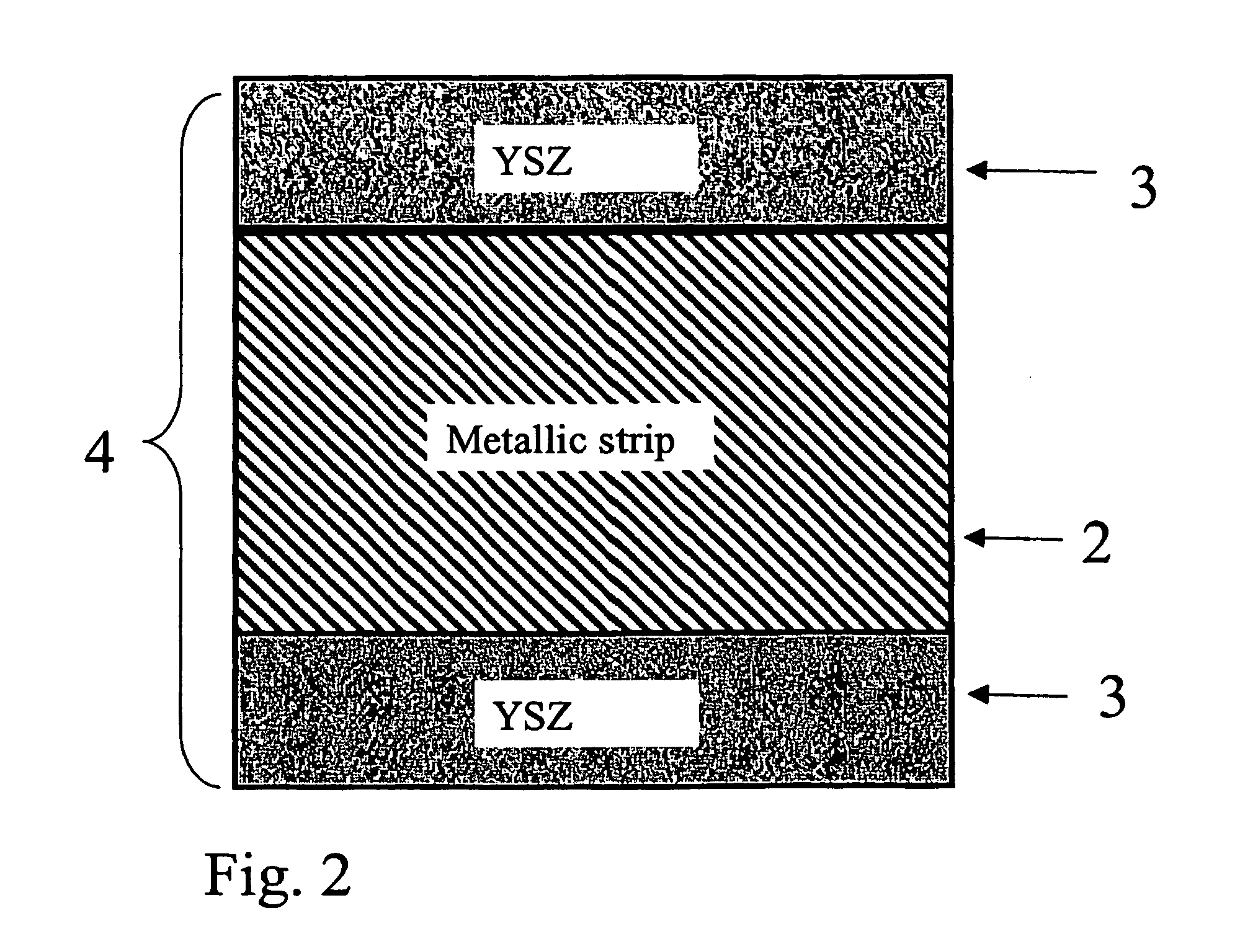Steel strip coated with zirconia
a technology of steel strips and zirconia, which is applied in the direction of superimposed coating process, sustainable manufacturing/processing, final product manufacturing, etc., can solve the problems of reducing the production efficiency of modules with integrated series connections, limiting the production of modules, and forming cracks and pinholes, so as to improve the adhesion of the coated strip, the effect of eliminating any curling of the coated strip
- Summary
- Abstract
- Description
- Claims
- Application Information
AI Technical Summary
Benefits of technology
Problems solved by technology
Method used
Image
Examples
Embodiment Construction
The Metal Strip to be Coated
[0019]The metal strip to be coated can be any metallic strip material with a low thermal expansion mismatch with the zirconia coating, preferably a stainless steel and most preferably a ferritic chromium steel. Such steel substrate materials are produced by ordinary metallurgical steel making with a chromium content of at least 10% b.w. suitably more than 14% b.w., and most preferably in the range 16-25% b.w. Some examples of possible steel substrates are grade ASTM 430 with a chromium content of 16% b.w., and the Sandvik grade 0C404 with a chromium content of 20% b.w., and an aluminum content of 5.5% b.w. The ferritic strip is hot rolled down to an intermediate size, and thereafter cold-rolled in several steps with a number of recrystallization steps between said rolling steps, until a final thickness and a width of maximally 1000 mm are achieved. Another important parameter is the surface roughness of the metal strip, which should be as smooth as possib...
PUM
| Property | Measurement | Unit |
|---|---|---|
| temperature | aaaaa | aaaaa |
| thickness | aaaaa | aaaaa |
| thickness | aaaaa | aaaaa |
Abstract
Description
Claims
Application Information
 Login to View More
Login to View More - R&D
- Intellectual Property
- Life Sciences
- Materials
- Tech Scout
- Unparalleled Data Quality
- Higher Quality Content
- 60% Fewer Hallucinations
Browse by: Latest US Patents, China's latest patents, Technical Efficacy Thesaurus, Application Domain, Technology Topic, Popular Technical Reports.
© 2025 PatSnap. All rights reserved.Legal|Privacy policy|Modern Slavery Act Transparency Statement|Sitemap|About US| Contact US: help@patsnap.com



